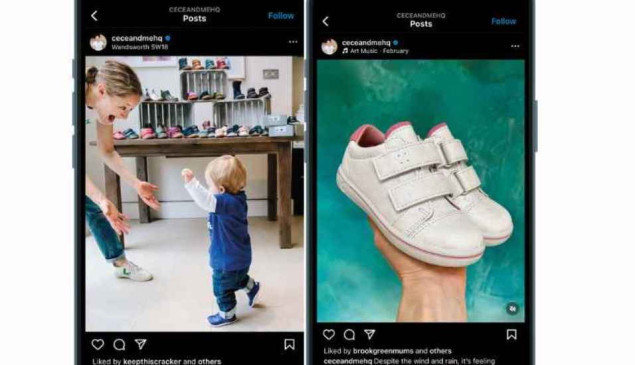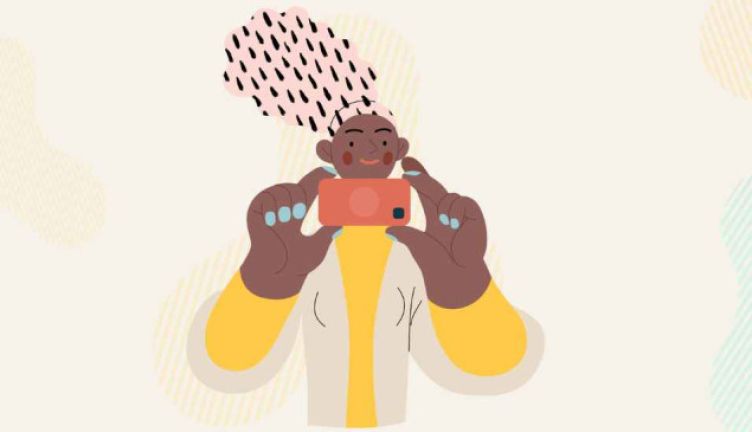What’s the formula for viral success on Instagram? And do you really need it for your franchise to succeed?
When Instagram first launched in 2010, it was predominantly an image sharing space that followed the premise of social media platforms before it, such as Bebo and MSN. The focus was firmly on enabling users to share snippets from their lives with their friends.
Then, came the influencers, who similarly shared content from their daily lives. But it had an aspirational quality, which eventually ushered in paid collaborations with brands. This was the beginning of what would become a behemoth of commercial opportunity for brands who are ready and willing to capitalise on Instagram’s estimated 1.4 billion user base.
However, the three-step process of taking a photo, writing a caption, and pressing post can look deceivingly easy, and it quite often doesn’t guarantee engagement. Before, you know it, you could be pouring hours into constructing a comprehensive social media plan without really reaping the results that justify the time spent.
So, before you plummet into the rabbit hole of Instagram, we spoke to digital marketing experts about what franchises can really do (or not do) to make the most of this platform.

Is Instagram really for you?
While Instagram is certainly an attractive platform for reaching new customers and raising brand awareness, it may not be the right place for you.
Consider how the platform could work for your business before sinking significant amounts of time into planning lengthy posting schedules for a target audience that may not necessarily exist.
“Be really clear about who you are or will be when using Instagram,” says Jessica Morgan, founder of Carnsight Communications. “Who are you targeting? What tone of voice will you use? Do you have brand guidelines to follow? Can you create consistent content?”
Product-based, consumer-facing, lifestyle businesses are often the most obvious fit here, and in the franchising space QSR brands such Burger Drop, Chai Green, and Black Sheep Coffee have clearly taken this approach with photogenic dishes set against the aesthetic backdrops of their restaurants, encouraging user-generated content.
However, that doesn’t mean Instagram is a non-starter for service-based or B2B businesses. “With strategic creativity, virtually any business can find its niche and thrive on this platform by emphasising storytelling and visual appeal,” says Darron Palmer, founder and lead photographer at Darron Palmer Photography.

What do we know about the Instagram algorithm?
The Instagram algorithm can feel somewhat illusive, especially when content you predict will thrive does incredibly poorly. However, Jessica reassures that the algorithm isn’t designed to persecute professional accounts, as is sometimes suggested by disgruntled users.
“The platform is trying to put the right content in front of the right users, so help it by being consistent, using a range of content including videos, lives, reels, and stories, using the right hashtags, and making sure content is helpful for your audience, and not too sales-driven,” she says.

Choose your brand over trends
It’s trends that can give an unknown brand a dose of virality, but this isn’t a common experience. Instead, it’s often better to curate content that stays true to the authenticity of the brand because this is much more likely to grow a healthy following of paying customers, rather than a spike in entertained users who will likely never buy.
“Just because it’s trending, doesn’t necessarily mean it’s going to automatically align with your branding,” confirms Darron. This translates to focusing on taking photos that convey your messaging, incorporating colours that are representative of your brand’s colour palette, and including people that reflect your diverse customer base.
“Sustainability is also huge at the moment, so make sure your images showcase you to be as sustainable as you can be,” adds Darron. “For example, don’t highlight single use plastics and disposable coffee cups.”
He also acknowledges the rise of AI usage within brand photography, which can be helpful but should be used with extreme caution. “People want authenticity, and that includes your images (especially images of you.) Don’t be tempted to go down the AI generated portrait route,” says Darron.
However, a word of warning for those who choose to defy this advice: “It finds hands very difficult to cope with so watch out for ‘giant hands’ in any AI assisted images.”

Don’t spend too long editing
Instagram comes with so many built-in filter options and there are plenty of free mobile apps to conduct more extensive edits. So, it’s easy to get carried away. “Don’t overcomplicate it,” advises Jeanette Lendon at Jet Black Squares. “My personal mantra is: if you can’t edit in a minute, bin it.”
She recommends beginning your foray into Instagram by considering your approach to editing and your chosen style. So, for example, if you’re going to use a filter, which one aligns most with your brand? The reason being, if you experiment with a new filter on every single image you’ll end up with a mis-matched Instagram profile which completely distracts from your messaging.
However, beyond instilling cohesiveness, using strong filters could be a real hindrance to customers trying to view your products. “You don’t want to misrepresent your product with a different, more vibrant colour if that isn’t what it looks like in real life. Gently enhance, but don’t go overboard,” says Jeanette.
Always shoot in natural light
There are also easy things you can do to limit your reliance on post-production editing, and that can be as simple as choosing the right time of day to take photos.
“Natural light is key,” confirms Jeanette, who recommends factoring this into your schedule when looking to add to your Insta-photo portfolio. “Make sure you have the light in front of your subject, so it gives a lovely, soft light,” she says. “Turn on the grid on your phone camera and keep your subject out of the middle square.
“By offsetting your subject, you can use the negative space (empty space in your photo) to add text, meaning people don’t have to read the caption in order to get info.”
With this in mind, it’s better to consider Instagram as a customer service channel rather than a marketing strategy, and as part of this you should ensure you’re answering customer comments and messages.

The franchise perspective: Build a community with user-generated content
Cece and Me is a mobile children’s shoe shop franchise. It frequently pop-ups at child-orientated locations such as playgroups and family cafes.
When the business launched in 2015, it immediately started using Instagram to compensate for the fact that the brand doesn’t have a physical shop window. Since then, franchisor Sam Chetworth and the Cece and Me franchisees have each cultivated a following within the local community.
“I know without having social media platforms, we wouldn’t be accessible to people,” says Sam. “If we weren’t on them then we’d be more reliant on word of mouth and people finding our website through Google.”
The primary goals here have been to increase brand awareness while also building a relationship with the community, which Sam believes has contributed to revenue. “I can see on the website that a decent proportion of people come through from Instagram and Facebook,” she says.
The franchisor uses analytics to understand what works and what doesn’t. Two forms of content have proved to be the most successful. The first is educational content about foot health and correct shoe fittings for children, which has a shareable quality on account its usefulness. Meanwhile, personal stories about Sam and the other franchisees have placed a human quality at the centre of the brand and appealed as an interest piece.
“I think that’s the thing that franchisees find the hardest – making themselves the face of the business,” says Sam.
Another challenge has been getting the right imagery to support the brand’s messaging, which centres on a child-friendly experience. For this, Cece and Me has leaned into user-generated content, which not only demonstrates an authentic experience but also conveys parent approval.
“One of my franchisees is much better at getting people to send her pictures after they have bought the shoes. I’d say about half of their content is pictures taken by other people, which is brilliant.”
Sam says the business’ initial introduction to Instagram was ad hoc but over the years she’s carved out planning time in which she schedules content for upcoming weeks – and this extends beyond grid posts.
“Instagram stories are a really good way to generate more interaction. I use polls and include a bit more personal content, which does get good reach,” she says.
However, Sam warns that size of following isn’t everything and not to fall into the trap of being fixated with this. “If you’ve got loads of people following you, but only a very small percentage of them are interested, then it’s not doing you any favours,” she says. “I’d rather have a small number
of followers who are really interested and engaged.”
Cece and Me’s main Instagram @ceceandmehq now has 2,030 followers. The franchise is looking to expand further and Instagram will remain intrinsic to reaching paying parents within the local areas that the brand serves.

5 steps to getting good photos with an iPhone
Polished studio photography isn’t essential for capturing the attention of users on Instagram. In fact, a lot can be done with an iPhone, according to Jeanette Lendon, who runs smartphone photography classes at Jet Black Squares.
- Use portrait mode: this lens option can be really effective in creating a professional feel to your photos. For android users, most newer models also provide the option to make the background blurry, which essentially creates the same effect
- Flip your phone and focus: experiment with taking photos with your phone upside down, this can create depth within the image. Make sure you touch the focal point on the screen to adjust focus on your product
- Look for macro-mode: some phones have macro-mode which means you can zoom in on small details. If you don’t have this, clip-on lenses can be around £10
- Invest in some cheap products: A selfie stick with a built-in tripod and Bluetooth remote can be really useful when taking photos on your own and should only set you back by £10-£20
- Craft some light: Cover a cereal box with tin foil and angle it so it reflects light back onto your subject.




_(1)_75_53_s.png)
_(1)_75_53.png)






















